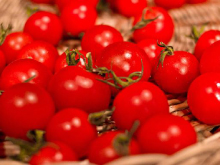The United Nations Environment Programme Report “Exploring the Potential for Adopting Alternative Materials to Reduce Marine Plastic Litter” cites research led by J.J. Benítez and J.A. Heredia-Guerrero on obtaining biomimetic polymers from plant cutin for use as an alternative material —from biomass— to traditional plastics, with a view to reducing their environmental impact on the seas.
The reason is because the potential for using cutin-based polymers is increasing, since cutin is an aliphatic polymer that is found naturally in the cuticle of plants, the layer that protects the outer surface of leaves and other plant organs that do not have a periderm. In this context, a disadvantage of cutin is that it contains a high number of monomers, which adds great complexity to the production process. However, the cutin found in tomato skin is composed mainly of a single monomer (9(10),16-dihydroxyhexadecanoic acid). This fact may facilitate the development of scalable and relatively inexpensive processes based on alkaline hydrolysis that use waste from fruit and vegetable tomato processing plants.




